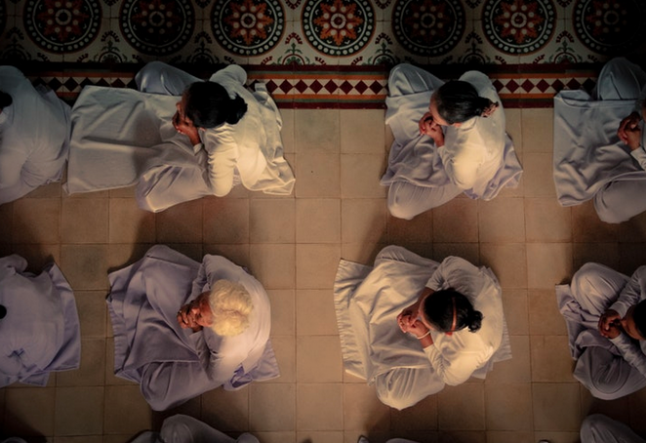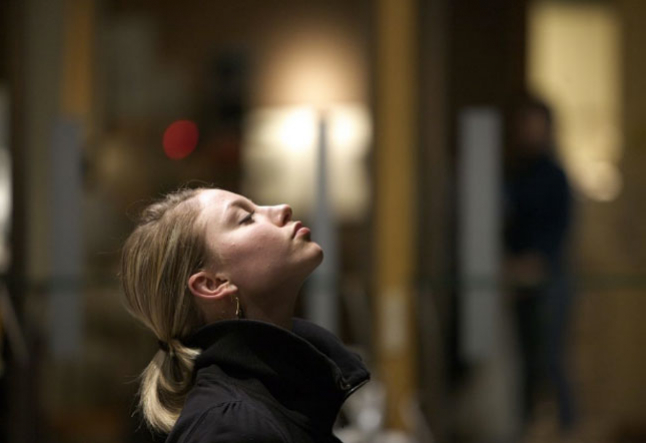The Healing Benefits of Mantras and Chants

Mantra chanting connects and heals
A quintessential example of the potential of sound to be used for healing was in ancient Greece, where Apollo was the god of both music and medicine. Ancient Greeks said, “Music is an art imbued with power to penetrate into the very depths of the soul.”
Since early man learned to bang two objects together in rhythm, music has played a significant role in the healing of humankind. Felix Mendelssohn once said, “Music cannot be expressed in words, not because it is vague but because it is more precise than words.”
Great music nourishes us in many ways and on many levels. It inspires, relaxes and energizes us. It leads us into new emotional states at the drop of a hat. Music is the pulse of the energy that courses in and through everything via vibration.
The mind/body connection can be enhanced through music of many different genres. Healing mantras and chants have ancient and obscure origins and are seen throughout history and in every major world culture. The power of chant bridges the two worlds of humanity and eternity. It’s the magical key allowing a person to touch into a deeper, organic and flowing world.
As with many things Eastern, Westerners are taking a look at this tradition of chanting and discovering it to be an effective means to bring them to a direct experience of Spirit, Being, Presence, or whatever you wish to call it—free from any particular concept or theology. It is meeting a deep longing for a greater sense of peace, connection and healing in the midst of our hyperactive, hyper-technical modern world.
The San Francisco Examiner music critic had this to say about chanting, “What we’re talking about is inner peace, transcendence, a serenity, beyond mortal care. For a generation that frowns on organized religious movements (or organized anything), this is, without a doubt, the new soul music.” And this isn’t just mystical mumbo-jumbo.
Scientifically speaking, human neurophysiology is affected by repetitive sounds. Our Reticular Activating System (RAS) is responsible for detecting new stimuli. If there is a change in the environment, the RAS stimulates the brain, causing it to become alert. When stimuli become repetitive, however—as in chanting—the RAS is disengaged. This has a quieting effect on the brain.
Brain wave activity is affected as well. Repetitive chants often increase alpha and/or theta activity, becoming relaxed while attentive to the outside world. Heart rate, blood pressure and respiration become lower. Stress hormones such as adrenaline are reduced and overall stress decreases. In this space, the inside world tends to become more significant than the outside world.
Further research by one of the world’s leading neuroscientists, Professor N. Lyubimov, reveals a state induced by such practices of chanting creates a unique pattern of coherent activity in the brain’s frontal cortex, indicating left and right hemisphere synchronization. This enhanced activity produces a state of restful alertness and improved mental performance and correlates with greater creativity.
One of the most respected sound healers in the world today, Tom Kenyon, reports, “Mystics and yogis show that the alteration of perceived time and space is characteristic of many spiritual experiences.
By their nature, chants tend to create such experiences and give us easy access to these non-ordinary states of mind.” Chanting is typically done in Sanskrit—the language of ancient India, and widely regarded as the mother of many modern languages. In Sanskrit, “man” means “mind” and “tra” means “instrument” or “freedom.” Hence, mantra is a tool to free the mind.
Buddhists talk about “no mind.” Meditation is a tool often used to create the space of “no mind.” Chanting a mantra has the same effect, often very quickly.
Chanting focuses and calms the mind. Studies have shown that chanting mantra regulates the breath, which has numerous health benefits. Breath alone is cleansing and transforming. Breathing in sync with others, as one does when singing in a group, amplifies the effect. People chanting together in a group entrain their breathing with each other, which has the additional benefit of providing synergy and opening the hearts of the entire assembly. People who struggle with silent, sitting meditation often prefer chanting, reporting that the same effects are easier to achieve using mantra.
LA-based Dave Stringer shares, “One of the things that interests me most about kirtan (chanting and singing mantras set to music) is how the responsory aspects of it blur the distinction between performance and audience. In my work, I am trying to translate the ancient traditions of kirtan and yoga into inspiring and thoroughly modern participatory theater, open to a multiplicity of interpretations and accessible to all.
World-renowned mantra enchantress, Deva Premal says, “Chanting removes energy blocks. On a metaphysical level, when you sing, your heart opens. That’s why all religions and traditions have made so much of singing in their rituals. When the heart opens you feel good. It’s that simple.
Perhaps the most powerful moment in a group chanting environment is when the kirtan song ends and the room sits in silence. The space between the sounds is when you stop and feel something. It’s easier to get in direct contact with your “true self” in this moment.
That’s often when people experience mystical or profound experiences such as intense love or gratitude. In concert, Deva Premal and Miten demonstrate that the silence between is just as important as the songs. In fact, the absence of clapping during their concerts is noted and appreciated by the artists as a sign of the depth to which the audience can collectively move. For Deva Premal, “There is nothing more precious than having sung with an audience, ecstatic with bliss and then entering the deep silence that mantra brings…
No singing experience is necessary to start chanting. In India, what’s considered important is the person’s devotion and ability to surrender, and not necessarily the pitch or quality of the voice.
If you’re self-conscious about your vocal ability, kirtan may be the perfect venue for you. Voices blend together, producing a pleasing effect, regardless of the individual talent in the crowd. By getting involved, you are enhancing the process for yourself and everyone else. “When you stop being an observer and become a participant, something opens in the process.
Maybe it’s just taking the step of commitment to being in the music as opposed to an observer of the music that helps people claim their own musicality,” Stringer said. “We try to create an atmosphere where they can let it rip, much like they do in their car. There’s something contagious about that. Once a person lets go, it gives permission for others to do so.
Jonathan Goldman, in his book Healing Sounds, talks about a formula for sound healing. Intention + Frequency = Healing. When a person sings mantras, the essence of their entire vibration is contained in the sound and acts like a homeopathic remedy to the group and even to the world. The frequency of sound moves in concentric circles out from its origin and affects the vibration of anyone in the field.
Although mantras, due to their roots in Sanskrit, can be thought of as a Hindu practice, in reality, most religions and traditions incorporate the use of chanting. From the Gregorian chant of the Christian tradition to the guttural chants of Tibetan lamas, the purposes are similar. In Islam, followers chant the 99 names of Allah and Jewish chants come from Biblical texts.
A member of the Chicago-based kirtan group, Jagati, says, “It’s different than what people are used to, and some people are attracted to that. It’s not about religion—it just makes you feel good.” In addition to their literal meanings, these sacred words carry a vibrational energy in the sound of the syllables that relates to the essence of the object that they refer to.
Since most of the mantras are about some form of the Highest Power, whatever you wish to call it, it’s a high frequency vibration that is invited into the field of the participant. When repeated with intention, mantras have a definite effect on the nervous system and the consciousness, becoming a powerful tool for healing and transformation.
Renowned chant master, Krishna Das, was asked what he enjoys the most about living a life devoted to mantra. “For me, it’s to see someone’s heart open… to watch levels of pain go away, to watch someone’s face relax.” – I wake every morning feeling like I’m living in a miracle—where spirituality, creativity, work and love have all come to mean the same thing. My life has been shaped by mantras; I have become their servant.” – Deva Premal




